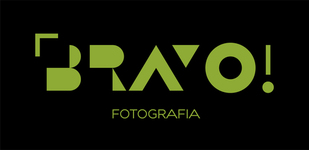Food photography is much more complex than just taking "a picture of the dish".
A well-produced food photograph stimulates customer appetite and, as in hospitality in general, has a strong influence on the customer's decision for the location.
All photographs for websites, advertisements, and digital communication in general must be made by professional photographers. This is a worthwhile investment, since these photos involve a lot of light control, as well as meticulous pre and post-production work. Here are some tips to make your photos look amazing, adding value to the product and being successful.
1. Lighting is the key: Find the best spot by considering the light source. Always opt for natural light and avoid flash. When creating a series of images (such as for a website or ad campaign), make sure the lighting remains constant and, if necessary, redo both white balance and photometry throughout the session.
2. No artificial colours: Foods must have their real colour. You can change contrast, brightness, or exposure, but never colours.
3. Make it appetize: When taking food pictures, never take a picture of something that has already been eaten or has been manipulated. You must create the feeling of "I want to eat this!"
4. Composition: Try to show a plate of food in the context of the meal, with the side dishes, drinks, sauces, etc.
5. Find the right angle: Try taking pictures from various angles, some dishes are best taken from above like pizzas, others are better sideways (such as meats), while others are best shot at a 45-degree angle. Move around the plate and get various combinations.
6. Focus on brand: Remember, consistency is key, treat photos to follow the same pattern as your signature. Another very important aspect of hospitality photography is being able to show the environment. It can be a big hotel or a very small cafe, the space also has a very important weight in choosing the establishment.
7. Attention to detail: Take an artistic look and capture details that make the property unique.
8. Play with movement: Freeze space and capture human elements through movement. After framing the image, wait until people walk in front of your frame and shoot while you are in place.
9. Put yourself in the customer's place: Make the food and the environment desirable, think of the detail that will make the customer decide to visit the place. Think about what makes it special.
10. It's not just what's inside that count: Outdoor photos are a good chance to show you what the surroundings, the streets, the neighbourhood look like. Showing architectural details also helps customers find it more easily.

ÁGUA NA BOCA
Fotografia de gastronomia é muito mais complexa do que apenas tirar "uma foto do prato".
Uma fotografia de gastronomia bem produzida estimula o apetite dos clientes e, assim como na hotelaria em geral, tem forte influência na decisão do cliente pelo local.
Todas as fotografias para sites, anúncios e comunicação digital em geral devem ser feitas por fotógrafos profissionais. Este é um investimento que vale a pena, pois são fotos que envolvem muito controle de luz, além de meticuloso trabalho de pré e pós-produção. Seguem algumas dicas para que suas fotos fiquem incríveis, valorizem o produto e façam muito sucesso.
1. A iluminação é fundamental: Encontre o melhor local, considerando a fonte de luz. Sempre opte pela luz natural e evite flash. Ao criar uma série de imagens (como para um site ou campanha publicitária), verifique se a iluminação permanece constante e havendo necessidade, refaça tanto o balanço de brancos quanto a fotometria ao longo da sessão.
2. Sem cores artificiais: Os alimentos precisam ter sua cor real. É possível alterar o contraste, o brilho ou a exposição, mas nunca as cores.
3. Torne-o apetitoso: Ao tirar fotos de alimentos, nunca tire uma foto de algo que já começou a ser comido ou já tenha sido manipulado. É preciso criar a sensação de "eu quero comer isso!"
4. Composição: Tente mostrar um prato de comida no contexto da refeição, com os acompanhamentos, bebidas, molhos etc.
5. Encontre o ângulo certo: Tente tirar fotos de vários ângulos, alguns pratos ficam melhor tiradas de cima como pizzas, outras ficam melhor de lado (como as carnes), enquanto outras são melhor captadas em um ângulo de 45 graus. Mova-se ao redor do prato e consiga várias combinações.
6. Foco na marca: Lembre-se, a consistência é fundamental, trate as fotos de forma a seguirem um mesmo padrão, que será sua assinatura. Outro aspecto muito importante da fotografia de hospitalidade é poder mostrar o ambiente. Pode ser um grande hotel ou um café bem pequeno, o espaço também tem um peso muito importante na escolha pelo estabelecimento.
7. Atenção aos detalhes: Tenha um olhar artístico e capture detalhes que tornam o estabelecimento único.
8. Brinque com o movimento: Congele o espaço e capture os elementos humanos através do movimento. Depois de enquadrar a imagem, espere até que as pessoas andem na frente do seu quadro e fotografe enquanto você estiver no lugar.
9. Ponha-se no lugar do cliente: Torne a comida e o ambiente desejável, pense no detalhe que fará com que o cliente decida visitar o local. Pense no que o torna especial.
10. Não é apenas o que está por dentro que conta: As fotos externas são uma boa chance de mostrar como são os arredores, as ruas, o bairro. Mostrar os detalhes da arquitetura também ajuda os clientes a encontrá-lo mais facilmente.

